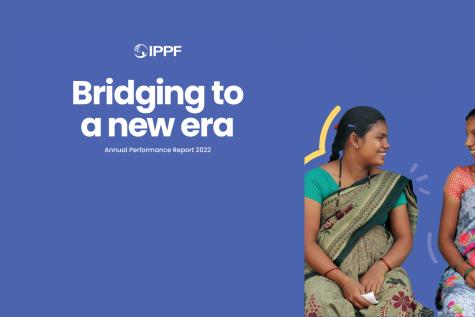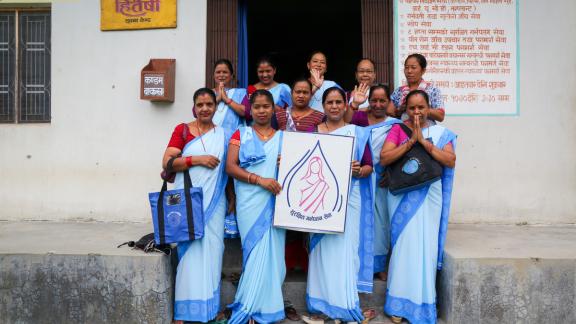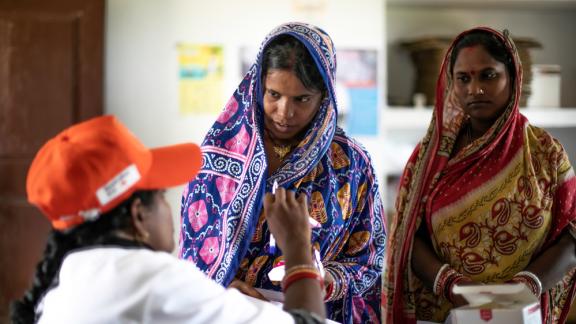Spotlight
A selection of resources from across the Federation

2022 Annual Performance Report
Bridging to a new era.
Filter our resources by:


| 05 June 2017
Financial Statements 2016
2016 saw the implementation of IPPFs new strategic plan and therefore was a year of transition for the Secretariat as operations were aligned to focus on the new outcomes. The strategy responds to social, political and demographic global trends. These include: the expectations and potential of the largest ever generation of young people; ongoing, significant social and economic inequalities, including discrimination against girls and women; and opposition that threatens gains in human rights. We continue to receive funding from and are grateful for the continued support of our key funders. With their support and help our unrestricted funding increased in the year to US$76.7 million from US$72.2 million. This was in spite of the United Kingdom’s decision to leave the European Union in June, which led to the weakening of sterling and Euro against the dollar and reduced our dollar income from our European donors. Restricted income increased from US$44.1 million to US$53.7 million. A significant factor in the increase was the US$10 million received from the David and Lucile Packard Foundation to enable IPPF to respond to the Zika crisis in the Western Hemisphere Region. The amount of grants to Member Associations (MAs) and partner organizations was US$68.3 million. Central expenditure decreased by US$2.9 million to US$16.1 million mainly due to the weakening of sterling whereas Regional expenditure remained consistent with the prior year at US$34.0 million (a US$0.4 million decrease on 2015).

| 17 February 2017
Mapping Study of Organisations & Networks in South Asia - Volume 2 Findings and Way Forward
This mapping study of networks, youth-led organisations, organisations that focus on youth development as well as youth-serving organizations has been conducted. A key aim of the study has been to bring these diverse organizations and networks on the same platform based on commonalities and also highlighting their strengths, so that through sharing of experiences, expertise and learning, SRHR with and for youth, including advocacy, can strengthen in the region

| 17 February 2017
Mapping Study of Organisations and Networks in South Asia: Volume 1, Map of Organisations & Networks
This document, a result of a mapping study undertaken in Nine countries in South Asia, showcases the dynamism of youth work and SRHR work in the region. It contains a purposive sample of 68 organisations/ networks working either on issues of SRHR, youth development and participation or both, with full recognition that the two are intrinsically linked. The data presented in the directory is information gathered either through primary data shared by the respective organisations/networks and/or supported by desk research. This is by no means an exhaustive list.

| 17 February 2017
Over Protected and Underserved - The Influence of Law on Young People's Access to SRH in Sri Lanka
This study was designed to fill an important gap in research in Sri Lanka. The research included a desk-based review of existing laws, regulations and policies on SRH in Sri Lanka, as well as the collection and analysis of qualitative and quantitative data from young people, parents and SRH service providers in Sri Lanka.

| 16 February 2017
Overprotected and Undeserved: The influence of Law on Young People's Access to Sexual and Reproductive Health in India
This study exploring legal barriers to young people’s access to sexual and reproductive (SRH) services in India contributes to filling an important gap in research. The research included a legal and policy review of laws related to SRH, as well as the collection and analysis of qualitative and quantitative data from young people, parents, and service providers in India.
| 13 January 2017
SRH HIV Integration - Link, Connect, Change
IPPF South Asia Region implemented a program advocating for the integration of SRH and HIV in Afghanistan, Bangladesh, Iran, India, Maldives, Nepal, Pakistan and Sri Lanka at policy, system and service delivery level through its Member Associations in the respective countries. The uniqueness of the program is its multi-stakeholder, the multi-layered approach promoting the concept of SRHR HIV linkages and integration at various levels. It facilitated in building up cross learning platforms and partnerships with different stakeholders, innovative integrated service approaches through a provision of small grants and developing a series of knowledge products which are useful for both replication and sustainability. SRH HIV Integration captures the process and the achievements of the past four years of the programme which also includes the learning and the way forward.
Pagination
- First page
- Previous page
- …
- 7
- 8
- 9
- …
- Next page
- Last page









